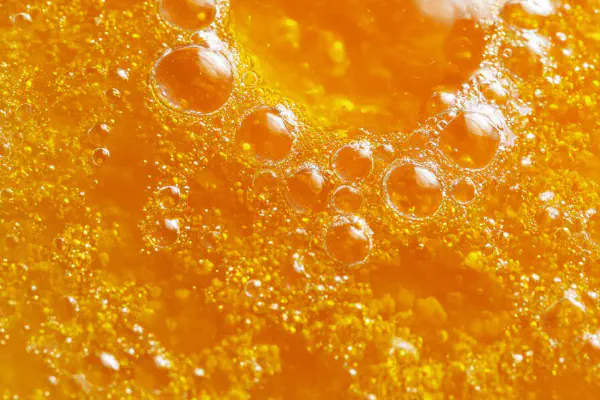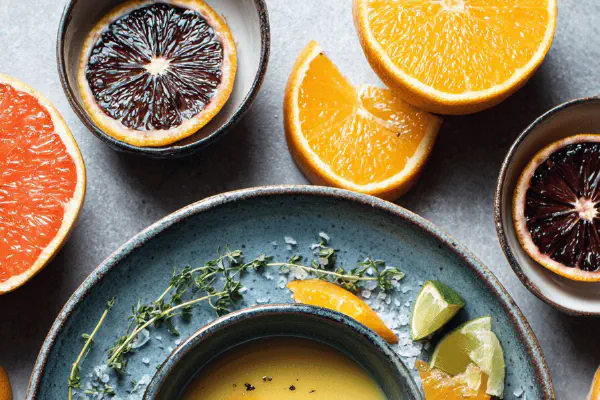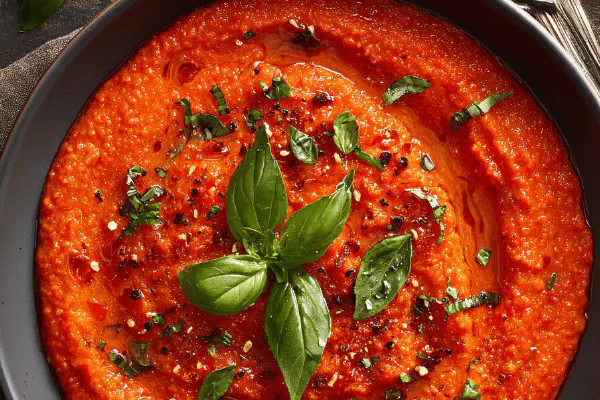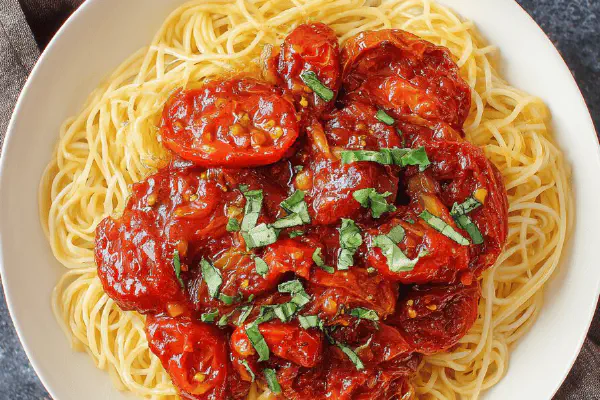Red Berry Twist Syrup
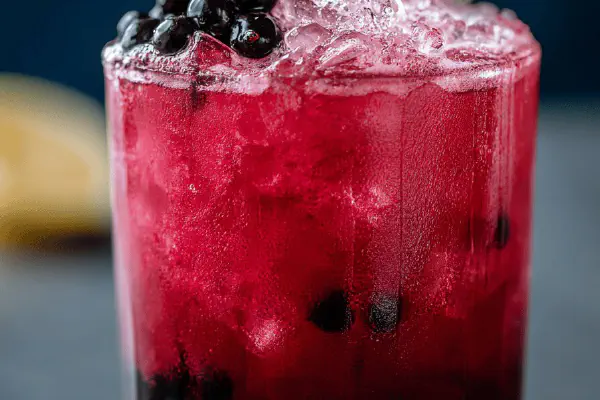
By Emma
Certified Culinary Professional
Ingredients
- 250 ml (1 cup) water
- 168 g (3/4 cup + 2 tablespoons) sugar
- 120 g (3/4 cup) rhubarb chunks, fresh or frozen
- 140 g (1 cup) blackcurrants, fresh or frozen
About the ingredients
Method
- Put water sugar rhubarb and blackcurrants into a small pot over medium heat. Immediately you’ll notice the sharp smell of rhubarb starting to rise. Bring to a gentle boil. Watch closely—fruit will soften quickly; burst skin releases juice.
- Lower heat to a steady simmer. Bubbles should break slowly but not vanish. Stir occasionally mostly to prevent sticking but also to gauge thickness. Simmer about 15 minutes or until mixture thickens enough to coat a spoon, syrup reduces visibly, color shifts to deep red-violet. You’ll smell a complex sharp sweetness now not just basic sugar.
- Remove from heat and let cool almost completely in pot, around 40 minutes or so. Fruit pulp should sink and syrup settle, easier to strain.
- Pour mixture through a fine mesh sieve into a bowl. Press gently with spoon—not too hard, or you’ll push seeds through and cloud syrup. What you want is clear, vibrant syrup with all fruity bits gone. Look for smooth shine and deep color.
- Transfer strained syrup into a glass container with lid. Seal tightly and refrigerate.
- Store up to 1 month in fridge. If syrup crystallizes gently warm and stir to revive. If too thick dilute with splash water.
- Shake well before serving; syrup settles naturally.
- Use with sparkling water, drizzle on pancakes or ice cream, or as a base for mocktails.
Cooking tips
Chef's notes
- 💡 Simmer gently; watch bubbles not vanish or roar. That sound shift means syrup thickness. Bubbles slow to break signal right viscosity. Heat too high kills tart brightness; too low drags time. Keep pot uncovered; moisture escapes without trapping heat. Stir just enough; too much cools syrup slow cooking. Use back of spoon to check thickness visually and tactilely. Color switches from bright red to deep purple means caramelizing sugars balancing sharp fruit acids.
- 💡 If texture grainy or syrup crystallizes after chilling, warm gently in water bath. Stir to revive liquidity but no hard boil. Adding splash water thins syrup if too thick later. In fridge, syrup tightens; shake before serving. Avoid squeezing pulp too hard while straining; pressed seeds cloud syrup with grit. Pulp sinking aids straining; leaves behind clean liquid. Use fine mesh sieve or muslin. Crushing berries pre-cook removes some seeds but watch rhubarb fibers don’t get mushy.
- 💡 Substitutions shift flavor and acidity. Blueberries or red currants work for blackcurrants but syrup turns less astringent, sweeter. Rhubarb must be fresh or thawed frozen; frozen chunks easier to chop. If fruit low juice content, stir in lemon juice; helps acidity balance and syrup sets better. Organic fruit reduces chemical smells overpowering delicate aromas. Avoid overripe fruits; ruin flavor fast and ferment sooner. Sugar reduction required since tart fruits bring natural sour punch. Adjust cook times based on fruit quality and size.
- 💡 Timing matters; 15 minutes simmer typical but sensory checks key. Smell changes from sharp rhubarb to caramel hints alert you. Thick enough when syrup clings to spoon; slow drip not watery splash. Look for syrup reducing volume visibly in pot. Cool in pot 40 minutes to let pulp settle; easier sieve job. Once strained, store chilled sealed tight to slow crystallization and microbial growth. After 24 hours rest, flavor rounds out; try not rush tasting hot syrup. Wait to notice softened bitterness and fuller aroma.
- 💡 Do not rush stirring; too frequent cools syrup causing longer cook. Swirl pot occasionally to break clumps and prevent burn on bottom. Rhubarb fibers prone to sticking; avoid charred bits. Use medium heat; bring to gentle boil, not roaring boil. After simmer, remove heat and cool partially; evaporation slows, flavor blends better. If syrup thickens excessively in fridge, thaw gently to avoid grainy texture. For completely seedless, crush berries but keep rhubarb chunkier to avoid stringy bits.
Common questions
What signals syrup is done?
Watch bubbles slow breaking. Smell caramelizing fruit under sharp rhubarb. Color shifts from bright red to deep violet. Thickness measured by coating spoon, drips slow down. Volume visibly reduces by about one-third. Texture clings but pours. Sensory cues over times mostly.
Can I swap blackcurrants?
Blueberries or red currants change acidity. Less astringency, more sweetness. Adjust sugar down or up based on taste. Rhubarb stand-in tricky; no cherry flavor replication. Lemon juice addition may be needed. Texture and flavor shifts but syrup still tasty with subs.
Syrup crystallizes in fridge—fix?
Warm gently in water bath, stir till syrup flows again. Avoid rapid heating or hard boil to keep texture smooth. Dilute with splash water if too thick after chilling. Shake bottle before use to mix separated syrup settling naturally.
How long keep syrup stored?
Up to 1 month fridge fine if sealed tight. Cooling slows fermentation and crystallization. If cloudy or strange smell appears discard. Can freeze but texture altered. Shake or stir before serving after storage. Cooling always needed for longevity.
